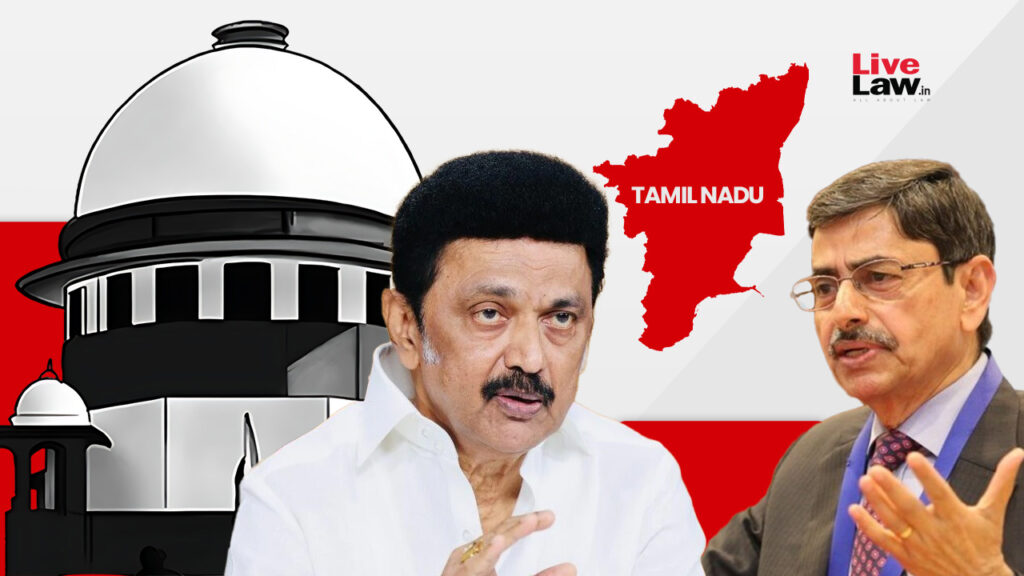By K Raveendran
The landmark Supreme Court judgment in the Tamil Nadu governor’s case marks a significant moment in the evolving jurisprudence concerning the constitutional roles and limits placed on governors, particularly when their actions are seen to disrupt the proper functioning of state governments. The judgment, on the surface, appears to provide a clear guidepost for future disputes where the governor may appear to override the mandate of an elected state government by arbitrarily stalling the passage of legislation.
Despite the clarity provided, however, the judgment leaves certain areas ambiguously defined, potentially giving rise to unforeseen and undesirable consequences in future conflicts. One of the critical issues is the scope of judicial review concerning the actual substance of the bills that were delayed. The ruling confirms that the governor’s conduct in keeping bills pending can and should be subject to judicial scrutiny. However, it does not clearly delineate whether the subject matter of those bills—their content, intent, and constitutional merit—is open to judicial examination once they receive automatic assent. This ambiguity raises serious concerns in scenarios where the state legislature and the Centre find themselves in a confrontational impasse. A bad precedent set is guarantee of future trouble.
For instance, in the situation where a governor’s delay has been rectified by the bill receiving automatic assent after a stipulated period, questions arise regarding whether the inherent constitutionality and practical implications of those bills were ever thoroughly vetted by an independent judiciary. The Tamil Nadu case specifically deals with the abuse of procedural power. Nonetheless, if future cases involve bills that bypass judicial review due to an automatic assent provision, significant risks loom.
Imagine a state legislature passing a bill that, while appearing legitimate within the legislative framework, subtly challenges the established constitutional arrangements or the balance of power between the Centre and the state. If such a bill were to receive automatic assent merely because procedural lapses had reached a predefined deadline, there would be little opportunity for judicial intervention to address any underlying constitutional concerns.
This scenario is particularly worrisome in the current era of heightened political polarization where state governments, such as the one led by M K Stalin in Tamil Nadu, have displayed tendencies that might bring them into direct confrontation with central authorities. In such a politically charged environment, the possibility that a bill, regardless of its substantive merits, might become law without any comprehensive judicial review could set a dangerous precedent. The risk is that political pressures and calculated legislative manoeuvres might yield laws that are technically in compliance with procedural norms while simultaneously harbouring elements that contravene the spirit of the constitution. In effect, the omission of a mandated review of the bill’s contents could become a loophole through which unconstitutional laws are enacted.
The potential for such outcomes underscores the importance of a more nuanced interpretation of the judgment. The decision, while affirming that a governor’s misuse of power is subject to judicial oversight, simultaneously leaves unanswered the question of whether the bills themselves, once automatically assented to, should be automatically deemed immune from judicial scrutiny. If the judgment is interpreted strictly, then automatic assent without subsequent judicial review may appear to sanction the status quo. Yet, the very logic that supported the Tamil Nadu government’s challenge against the governor might also necessitate a mechanism that ensures every bill, particularly those that have been stalled for political or strategic reasons, is subjected to an independent review to ascertain its alignment with constitutional principles. Without such a mechanism, the process risks becoming an empty procedural formality that validates legislative proposals without probing their potential implications on federal balance and democratic accountability.
The consequences of this potential gap in judicial oversight could be severe. In a scenario where a state government and the Centre are pitted against each other, the absence of a judicial check on the automatic assent mechanism could be exploited by either side for political gains. For instance, a state legislature might be tempted to pass bills that tacitly undermine central authority, confident in the knowledge that any challenge would be limited to procedural matters rather than the content of the law. Similarly, central authorities could leverage the automatic assent provision to bypass state-level objections and force policies through legislative channels. The danger is that such manoeuvres could lead to an erosion of both state autonomy and the robust checks and balances that are central to the functioning of a federal system.
Furthermore, the judgment raises broader questions about the evolution of the constitutional doctrine related to governors’ powers. Traditionally, the role of the governor has been seen as a representative of the Centre, intended primarily to act as a ceremonial head while providing a safety valve in times of constitutional emergency. However, the reality has often been different, with governors occasionally taking on an active role in the governance process, sometimes even to the detriment of democratic institutions. The Supreme Court’s ruling is a corrective measure in this regard, aimed at reining in the expansive interpretation of gubernatorial powers. Yet, in doing so, it inadvertently leaves room for interpretations that could be strategically exploited in future political contests. If future cases reveal that the automatic assent provision becomes a means to circumvent judicial review, then the judgment, despite its immediate impact, could lead to deeper systemic vulnerabilities that are contrary to its original intent.
What is required, therefore, is a more robust and holistic approach to ensuring that the legislative process remains both democratic and constitutionally sound. While the Supreme Court has rightly established that arbitrary delays by governors must be constrained through judicial review, it remains incumbent upon both legal scholars and policymakers to ensure that every bill, regardless of the manner in which it is assented, is scrutinized not just on procedural grounds but also on substantive constitutional merits. Such an approach would help to bridge the gap left by the current judgment and prevent the exploitation of automatic assent provisions in politically charged environments. Ultimately, a well-calibrated system of checks and balances is essential not only to prevent the misuse of gubernatorial power but also to safeguard the integrity of the legislative process.
The judgment, therefore, may not be the final word, though a pivotal moment by all means. (IPA Service)




 How Narendra Modi’s Arrogance Has Adversely Affected India’s South Asia Diplomacy?
How Narendra Modi’s Arrogance Has Adversely Affected India’s South Asia Diplomacy? 